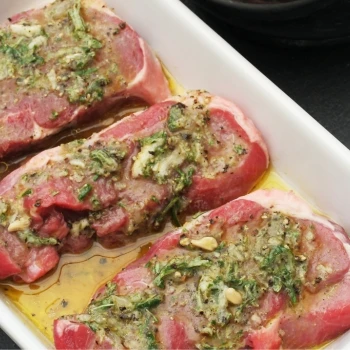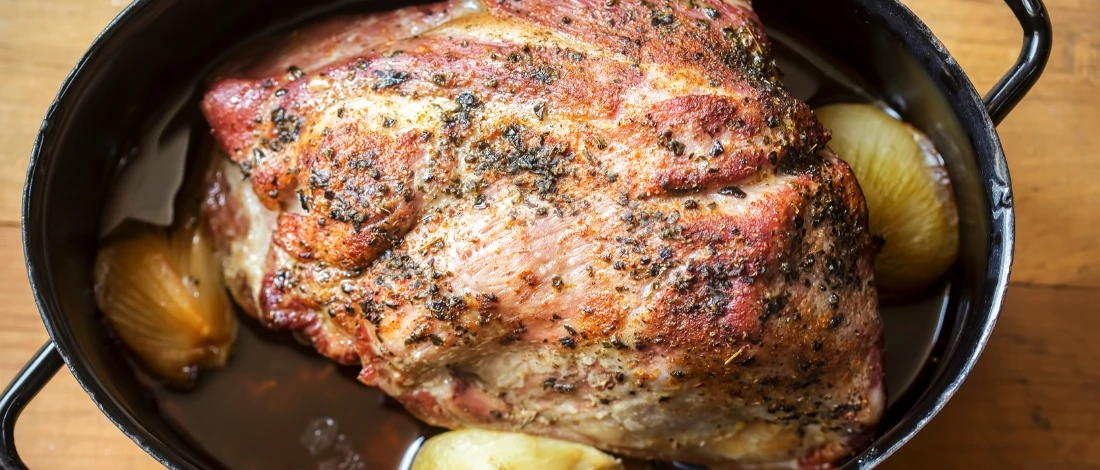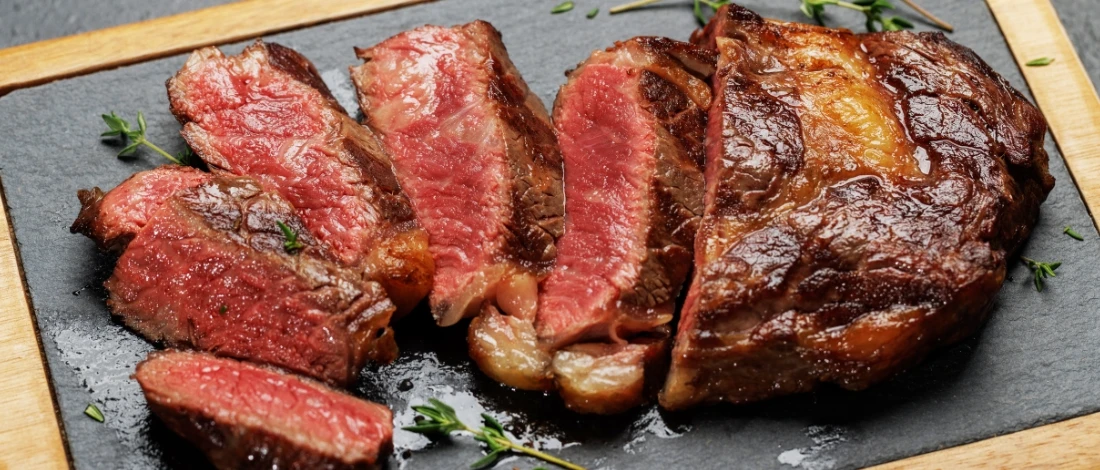Beef shoulder steak is a testament to the magic that can happen when you give a lesser-known cut of beef some love and attention.
I’ve been cooking shoulder steak for years, and it became my family’s favorite. Having experimented with various seasonings and cooking methods to find what works best, I'll guide you through every step.
I cover selecting the perfect shoulder steak, how to marinate it in my secret blend of spices and then sear it to perfection.
Let's get into it.
Recipe Overview

- Prep Time: 5 minutes, plus one-day marinating time
- Cook Time: 10 minutes
- Total Time: 15 minutes, plus marinating time
- Number of Servings: 4
Ingredients
- 3 lbs boneless beef chuck steak
Marinade Ingredients:
- 4 tablespoons olive oil
- 5 tablespoons red wine vinegar
- 4 cloves garlic, minced
- 1 teaspoon brown sugar
- 1 teaspoon Italian seasoning
- 1/3 teaspoon red pepper flakes
- Salt and pepper
Compound Butter Ingredients:
- 2 cloves garlic, minced
- 1 tablespoon thyme, chopped
- 1 tablespoon rosemary, chopped
- 1 stick unsalted butter
Instructions

- Mix minced garlic, olive oil, red wine vinegar, brown sugar, Italian seasoning, red pepper flakes, and salt and pepper to make the marinade. Combine all the ingredients well using a whisk.
- Put the boneless chuck steak in a pan and pour the marinade over it. Make sure the chuck steak is completely coated. Put a plastic wrap over the pan and place it in the fridge for 24 hours.
- Make compound butter by placing softened butter in a bowl. Add minced garlic, rosemary, and thyme. Use a hand mixer to combine well. Roll the butter into a log and cover with plastic wrap. Pinch the ends to hold the butter in the log shape, then place it in the fridge so it hardens.
- Heat your charcoal or gas grill and put marinated steaks on direct heat. Grill about four minutes per steak, depending on the degree of doneness you want.
- Once the chuck steaks are done, remove them from the heat and place a little compound butter on each steak.
- Let the steaks rest so the butter melts, and serve.
“Put a tiny knob of butter into the pan before you take out the steak. Make sure to baste the steak with the butter so it gets a nice brown flavor.”
- Gordon Ramsey, British Chef
Pro Tip: Make sure to remove the steaks from the pan as soon as they are done cooking, as residual heat can overcook them.
You can also cook the delicious steak recipes in a Dutch Oven. It has a tight-fitting lid and heavy construction that helps evenly distribute heat, so you have tender chuck steak.
More Steak Recipes:
Recipe Notes

Here’s what to keep in mind when making a grilled chuck steak recipe:
- Use boneless chuck roast with a lot of marbling for tender and moist results. If you don’t want to marinate, use chuck-eye steak. Chuck eye steaks are more tender compared to chuck steak, and you can skip the marinade.
- If you don’t marinade the chuck steaks, season generously. Use black pepper, kosher salt, and your preferred seasonings.
- Check the internal temperature using a digital meat thermometer. The steaks should reach 145 degrees for well done [1].
- Let the chuck steaks rest after cooking for five to ten minutes so the juices redistribute.
- Take the meat out of the fridge ahead of time so it reaches room temperature. This helps cook steaks more evenly.
- Pat the steaks dry before grilling so they get a better sear.
- Slice the meat against the grain for easier chewing.
- Topping chuck steaks with compound butter is optional, but I prefer to do it for more flavor.
Nutrition Info
- Calories: 153
- Total carbs: 9g
- Protein: 99g
- Fat: 89g
- Fiber: 2g
- Net Carbs: 3g
Chuck Steak Ingredients and Substitutions

Here’s what you should know about steak seasoning and which substitutions to use:
- Use boneless chuck steak with plenty of fat and connective tissue. Chuck steak turns tender after marinating. It’s also great for making beef stew in a slow cooker.
- Add celery flakes for more aroma and flavor. Use dried celery instead of fresh as they don’t have added salt.
- Use kosher salt and freshly ground black pepper to enhance the beef flavors.
- Look for chuck steaks with a lot of marbling and at least one-inch thickness.
- Use olive oil if roasting the steaks to get a golden-brown crust.
- Red wine vinegar adds body and rich flavor to the meat. You can also use beef broth if you’re out of wine.
Related Articles:
How to Store Leftover Chuck Steak?
Leftover chuck steak can be stored in the fridge in an airtight container for up to three to four days.
You can reheat the steaks in a microwave or an oven-proof dish at 250 degrees.
You can also freeze steak leftovers for up to three months. Make sure the steaks are sealed in a freezer-safe wrap or a container.
FAQs
What Is the Best Way to Cook Beef Shoulder Steak?
The best way to cook beef shoulder steak is to braise it. Brown the meat with a little fat, add water or beef broth, and cook in a pan on low heat.
What Is Beef Shoulder Steak Good For?
Beef shoulder steak is good for slow-cooking recipes. You can cut it or cook it whole in a stew or casserole so the connective tissue breaks down, and you have a tender steak.
Is Beef Shoulder a Tough Cut?
Yes, beef shoulder is a tough cut. It comes from an area that’s well-exercised during the cow’s life. This cut has a lot of connective tissue, but when cooked right, it provides excellent flavor. It’s also great for grinding into ground beef.
References:
- https://www.usda.gov/media/blog/2022/10/03/cooking-meat-it-done








